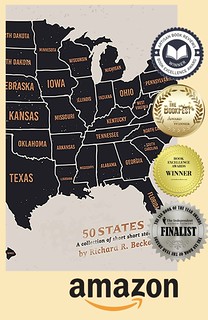There is a childhood punishment that the protagonist of my debut novel describes in my forthcoming debut novel. One of the beta readers didn’t like it. She called it silly, disbelieving it would ever happen.
The irony is that I borrowed it from real life. No, the novel isn’t real life. It’s a work of fiction. But as most writers will tell you, we all draw on real people or events, especially those that leave physical, emotional, or psychological imprints on our lives.
How else does one write straight, honest prose about human beings? Some of us look backward while writing forward, weaving the past into the present — even if we’re implanting the event on someone we made up, asking ourselves the whole time how the character might respond to it differently than we did. Sometimes they do. Sometimes they don’t.
This is where it can sometimes be tricky as a writer. We borrow bits of this and that from our lives and reshape them into something else for other people to experience until it isn’t our experience anymore, but someone else’s entirely, someone we made up. And this is why I sometimes offer a cautionary whisper to those who might remember actual events before they read my work. It’s not them or me or you or that or what happened, I tell them. Because, well, it isn’t any of that. Except in this case, maybe.
The childhood punishment I’m talking about really happened, and it happened to me. It was so real, in fact, I spent the better part of my twenties believing I deserved it, coping with it and other psychological abuses as a sort of joke. How bad of a kid was I? I was so bad …
When I finally had my own kids, I stopped telling the joke. It was no longer funny as I realized it was a punishment that I could never prescribe on my kids or any kids, for that matter. There wasn’t any infraction worthy of such a punishment or even the threat of it — which four more children endured while growing up until it became a thing of legend.
The punishment I’m talking about sounds familiar to most people. It was a room restriction, common enough that The Atlantic wrote about it like a rite of passage among previous generations. Some still argue that “grounding” can be effective. Maybe so. Except for mine, maybe.
My grounding wasn’t a weekend or week, as some might have experienced. It was a month, with the real caveat being that everything interesting was removed from my room — books, games, papers, pencils, etc. The circumstances didn’t make sense either, as it had very little to do with anything I did but a demonstration of unchecked authority. She had told me there would be consequences, so she had to follow up.
The consequence for putting one dish out of the dishwater away dirty was a month-long restriction. I didn’t doubt her. Past experiences had always convinced me she meant business. So I did what any preteen would do. I slowly, carefully, and meticulously inspected every dish while putting them away. And I felt true terror when she came in to inspect the work, slowing and randomly looking over glasses and plates and silverware.
I was so very careful, but it was there anyway. There was a water spot on one of the knives. The declaration of its finding was so fierce that it alone would have taught me a lesson, assuming there was one to teach. But it didn’t stop there, couldn’t stop there.
The consequence had already been outlined. I would be placed on room restriction for a summer month, only allowed out to use the bathroom and for meals.
I was so angry that it never occurred to me that I couldn’t see the offending water spot, nor could I discern whether it was the knife I had put away or some other that she had plucked from the drawer. What did occur, I learned later in life, is that she had triggered a fight or flight response, and I always tended to be a fighter.
I made a cavalier proclamation that I didn’t care about her punishment or authority. I would take my punishment like a champ, shut myself off from her wickedness, and read, draw, and play games until my vacation from her ended. Tut tut. Lay it on me.
That’s when she delivered what amounted to a left hook I never saw coming. She told me I was too smart for my own good, so all those things would be taken out of my room too. I would be left in there with nothing except my bed, clothes, and a window to look out of from the elevated first story of our apartment. It overlooked a pond.
Sometimes my son and daughter ask me what I did for that month. They are especially perplexed because, nowadays, a cell phone restriction can be more impactful than banishment to a room ever seemed to be. From what I remember, and I blanked a good part of it, I imagined things.
The protagonist in the novel, on the other hand, never says. He only mentions it as an illustration of circumstance, given the book isn’t about abuse. Any psychological abuse is only a subplot, a mechanism to help people understand the boy in relation to other events in the story.
Even so, I sometimes hope its presence in the story sparks conversation about it as it did with one of my beta readers. When people hear or talk about abuse, the word conjures images of physical or sexual abuse before emotional abuse or neglect, but those things exist too. And the wholesale destruction of someone’s self-worth carries consequences that take even longer to heal.
If you know of someone who needs help or if you need help yourself, Childhelp can put you in touch with local resources in your area. Aside from that, let’s have a conversation. Stories help people learn they are not alone, even when they sound stranger than fiction.



















